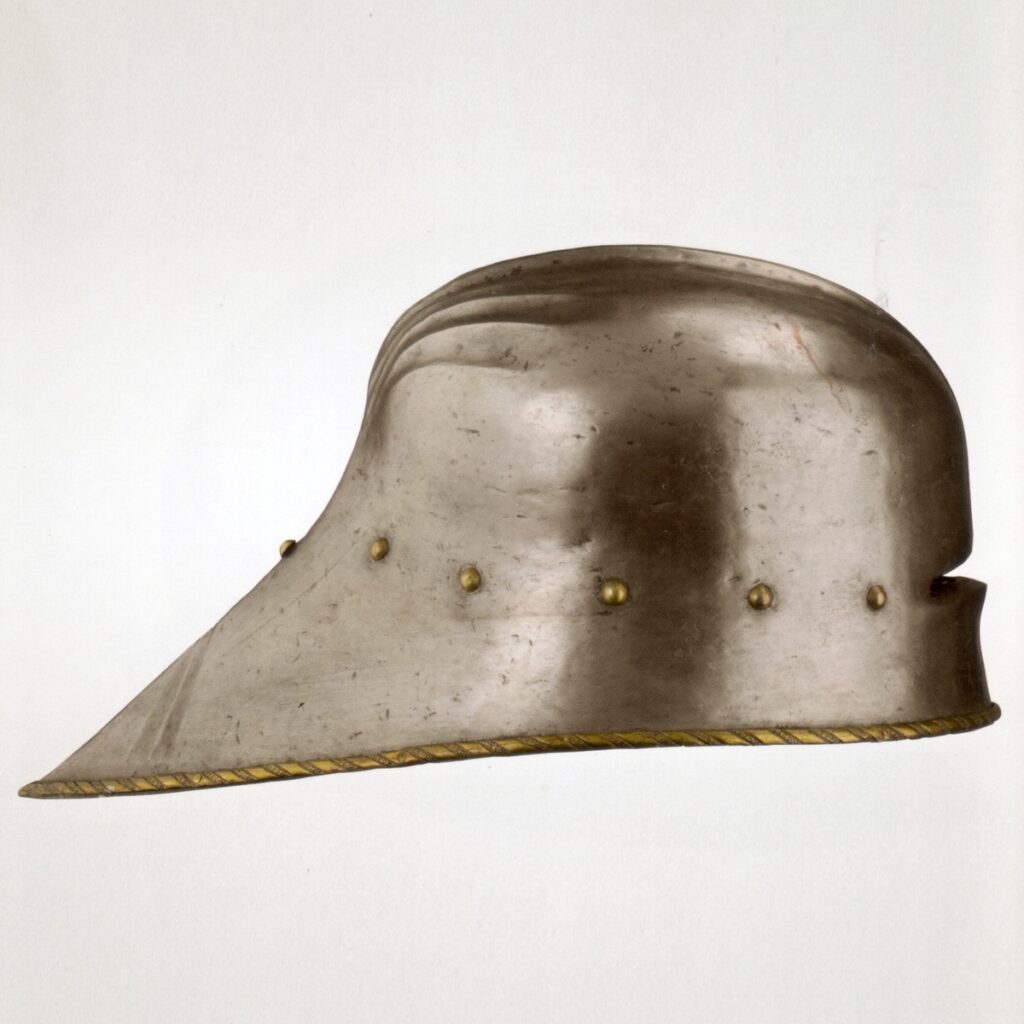
03 Salade, Germany, c. 1480
Fotogalerie
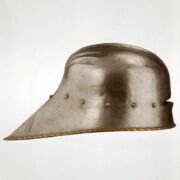
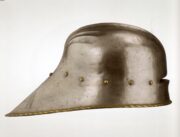
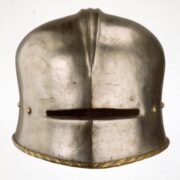
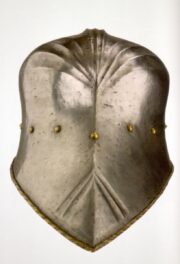
An example of a German type of fixed-faced salade from the second half of the 15th century. This type evolved from the iron hat when the sharply folded roof was transformed into a wide face cover, which was stretched at the back to protect the greater part of the back of the head. A slit in the face of the helmet facilitated vision. In later salades, this part was separated and mounted on pivots to form a typical half visor. As this type of helmet covered only the upper part of the face, a plate buffe was added to protect the chin and throat, protruding into the breastplate, which filled the gap between the helmet and the upper edge of the breastplate. It was called a chin or fighting beard because of its specific shape.
The helmet is made of one piece, with a comb running down the centre, decorated with a fan-shaped fluting on both sides in the rear part. The lower edge is finished with a brass rim with chopped decoration. This type of decoration is typical of late Gothic armour from the workshops of Augsburg armourers. On the left side of the skull we can see traces of copper soldering repairs.
Length 415 mm, width 233 mm, height 190 mm, weight 2 180 g.
Aktuálně

Tak trochu zamrzlé spojení

Válečný veterán Petr Matouš pokřtil v Armádním muzeu Žižkov svou knihu. Patronkou je i ministryně obrany Jana Černochová

Call for Papers: Tváře brannosti – branná výchova, branné spolky a civilní obrana v dějinách

Richard Tesařík / 3. 12. 1915 - 27. 3. 1967








